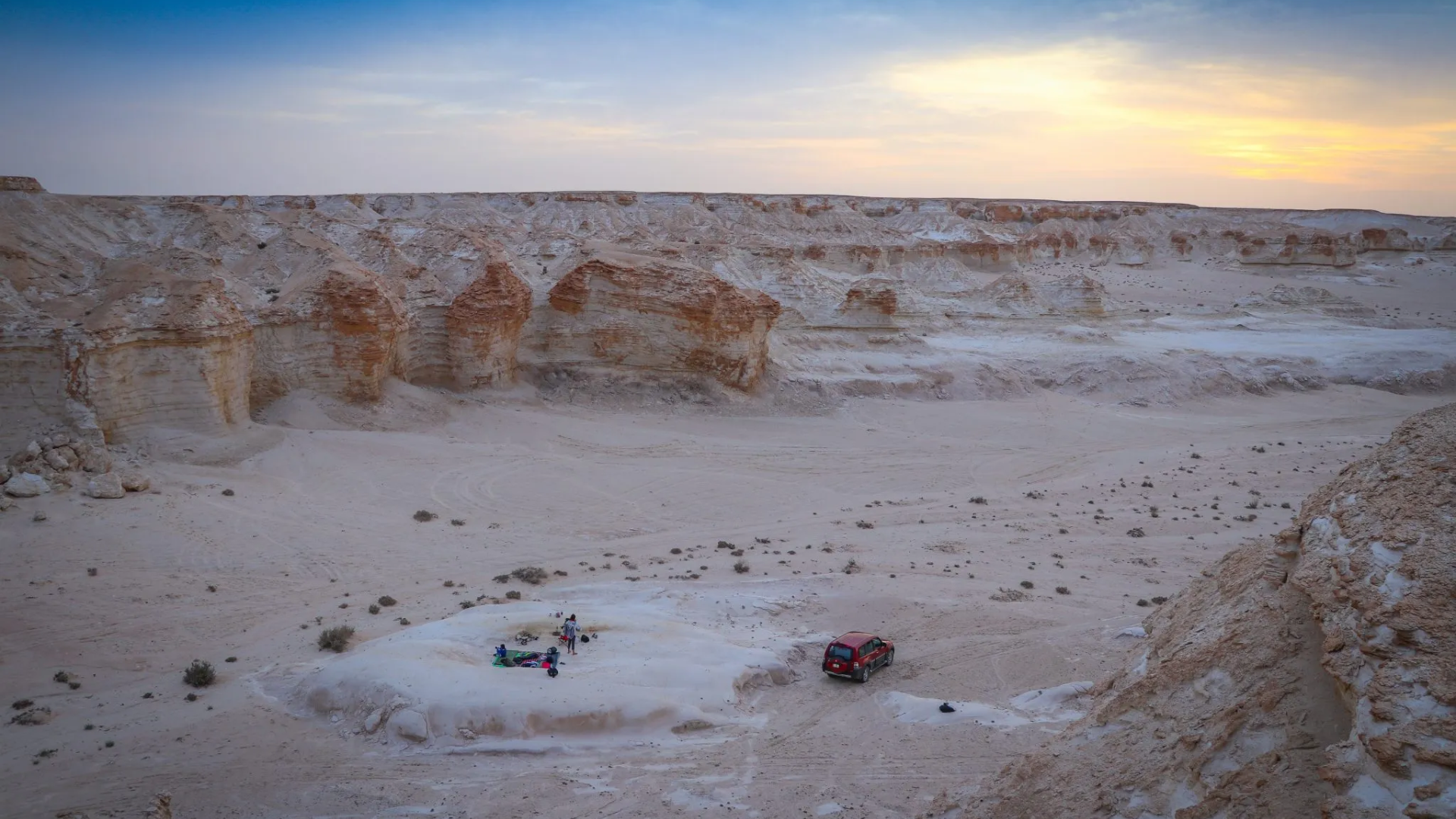
- 24 Sep 2024
Located in the Northeastern desert of Jordan, Al Dahek, also known as the White Desert, is a natural gem that has captured the attention of geologists, ecologists, and adventurers alike. Covering approximately 265 square kilometres in the Zarqa Governorate, this vast expanse of chalky-white rock formations is not only a striking visual wonder but also a site of great geological and ecological significance. Its potential as a geopark makes it a key site for both conservation and scientific research in Jordan.
A Geological Treasure
The White Desert is distinguished by its limestone and chalk formations, which have been carved by millions of years of erosion caused by wind and water. These formations provide a window into ancient geological processes, revealing layers of chalk, limestone, and basalt, alongside rare mineral deposits such as barite. These layers, uncovered over millennia, contain fossils of marine life, which hint at the region’s past when it was submerged under an ancient sea.
The area also features stunning natural sculptures and rock formations, tall rock spires shaped by erosion. These formations are rare in the region and serve as a testament to the powerful natural forces that have shaped the desert over time. The combination of these geological phenomena makes Al Dahek an open-air geological museum, offering insights into the Earth’s history.
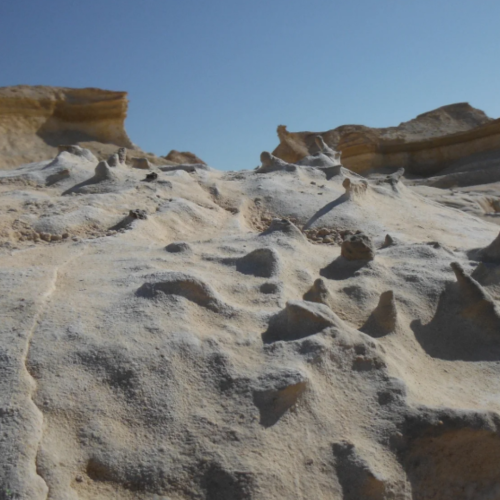
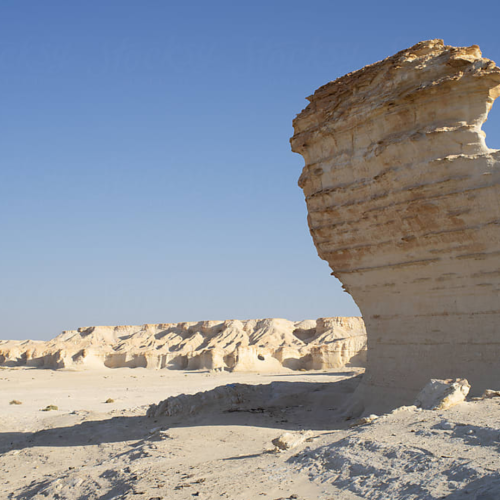
Ecological Significance and Biodiversity
While Al Dahek’s geological features are its main attraction, its ecological significance cannot be overlooked. The region is part of Jordan’s desert land, which experiences low annual rainfall, high temperatures, and extreme evaporation rates. Despite these harsh conditions, the desert is home to an ecosystem that has adapted to survive in the arid environment.
The experts report details the importance of the region’s water basins, particularly the Azraq Basins, which play a crucial role in shaping the hydrology of the area. These basins help to channel water through the region, influencing the distribution of vegetation. The area’s unique vegetation includes drought-resistant species that have adapted to the desert environment. The geological and ecological diversity of Al Dahek is essential for maintaining the balance of the local ecosystem, which is home to various plant species and wildlife.
Wildlife in Al Dahek includes species like the Sand Cat, Cape Hare and Rüppell (Sand) Fox, all of which rely on the delicate balance in the desert. Implementing sustainable practices in the area would not only preserve its ecological integrity but also enhance biodiversity by creating a more hospitable environment for both plants and animals.
Moreover, the report emphasises the role of community engagement in managing these resources, suggesting that local populations could play an active role in maintaining the ecological balance. This approach could be integrated into Al Dahek’s future as a geopark, ensuring that the natural beauty and resources of the White Desert are preserved for generations to come.
A Destination for Eco-Tourism and Geotourism
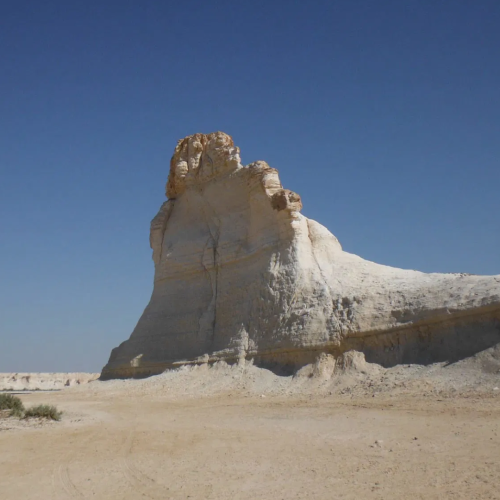
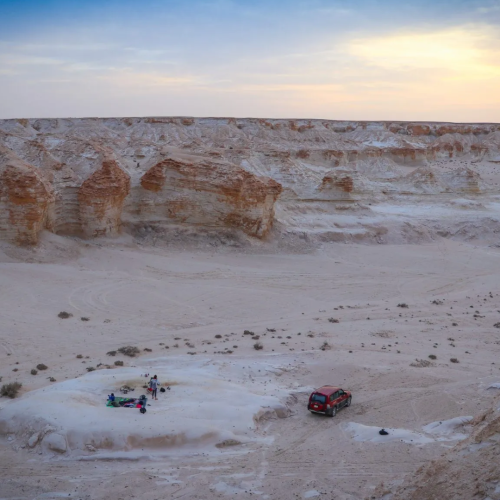
The potential designation of Al Dahek as a geopark would not only elevate its profile on the global stage but also contribute to sustainable tourism practices that protect the environment while promoting education and awareness. Guided tours through the desert could highlight the area’s geological history, paleontological discoveries, and the importance of conservation in such a fragile ecosystem.
Socio-Economic Importance
The desert’s proximity to the Kingdom of Saudi Arabia also gives it socio-economic significance. Local communities engage in livestock farming and could benefit from enhanced sustainable practices that help preserve the desert’s resources. By implementing conservation techniques, these communities can secure their livelihoods while supporting the ecological balance of the area.
Moreover, the report emphasises the role of community engagement in managing these resources, suggesting that local populations could play an active role in maintaining the ecological balance. This approach could be integrated into Al Dahek’s future as a geopark, ensuring that the natural beauty and resources of the White Desert are preserved for generations to come.
Al Dahek is more than just a White Desert; it is a geological and ecological treasure that deserves recognition and protection. Its unique rock formations and diverse ecosystem make it a candidate for geopark status, which would highlight its importance not only to Jordan but to the world.
This article is based on reports from comprehensive studies conducted by experts in Al Dahek as part of the NatureWorks project, implemented by Leaders International in partnership with the Royal Society for the Conservation of Nature (RSCN) and funded by the Embassy of the Kingdom of the Netherlands in Jordan.